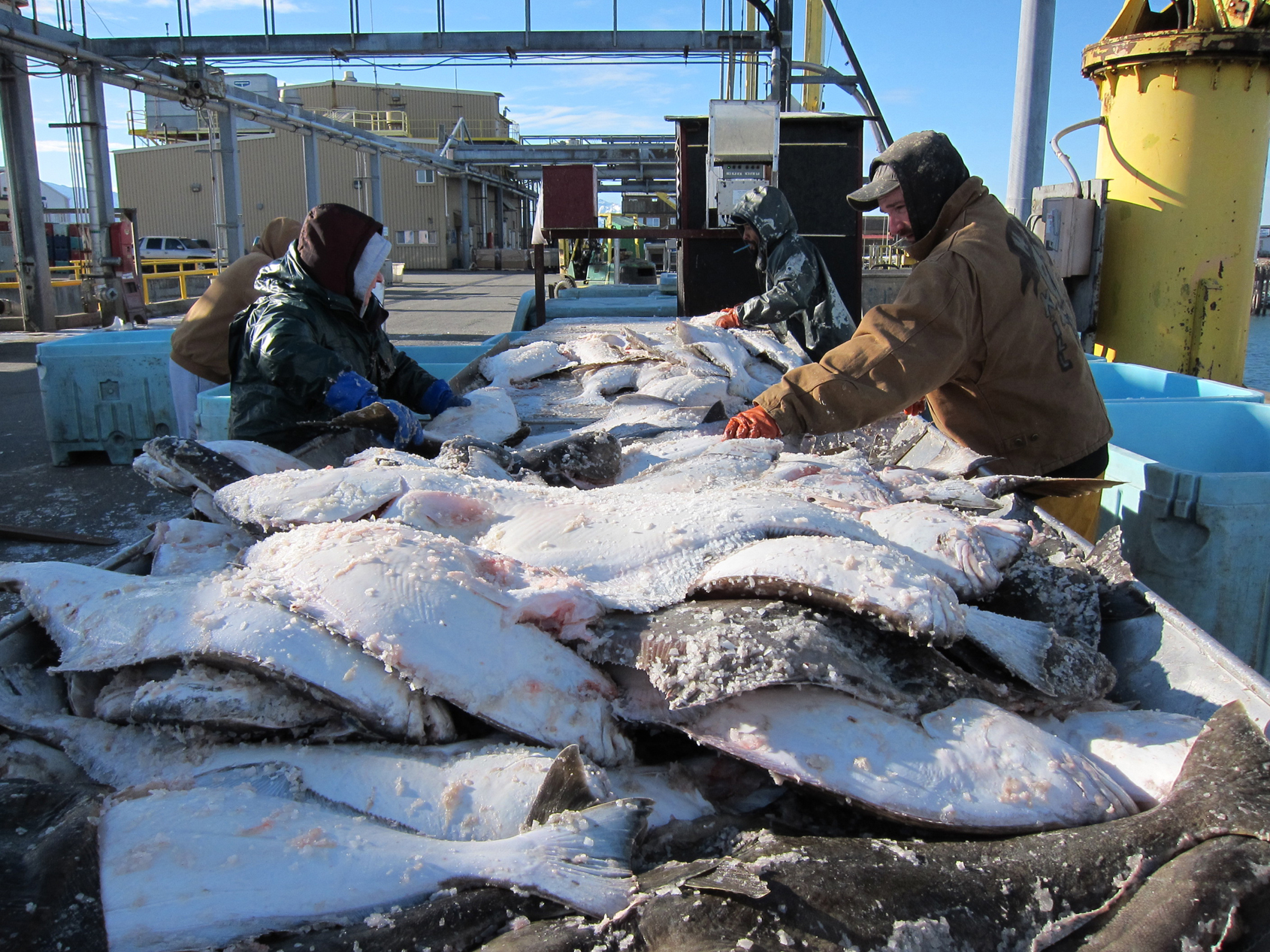Alaska once again led the nation’s seafood output in 2014, according to a recently released report from the National Oceanic and Atmospheric Administration.
According to the administration, or NOAA, Alaska led all states in sheer volume of U.S. seafood landings with 5.7 billion pounds valued at $1.7 billion. The next closest state was Louisiana shrimp-based fisheries at 870.5 million pounds.
Overall, landings and values are both down from 2013, though NOAA officials say the trends are still positive.
The United States is the second largest consumer of seafood in the world, even with a relatively small per capita consumption of 14.6 pounds per person per year, steady from 2013’s 14.5 pounds per person.
U.S. fishermen landed 9.5 billion pounds worth $5.4 billion in 2014, a decrease of 394 million pounds and $43 million compared to 2013.
Alaska’s $1.7 billion was the greatest value as well as the greatest volume for seafood landings. The next closest were Maine and Massachusetts at $547.7 million and $524.7 million, respectively, powered by American lobster and scallops, two of the most valuable fisheries in the U.S.
Alaska’s ports led the nation in quantity of landed seafood, but not in value. Of the top five most voluminous seafood ports, Alaska claimed three, spearheaded by Dutch Harbor’s 761.8 million pounds worth of seafood, mostly walleye pollock.
Salmon dominate Alaska’s state fisheries, but on the high seas whitefish is king.
Pollock, flatfish and cod topped the list of Alaska’s harvest by value at 3.2 billion pounds, 736.8 million pounds and 722.7 million pounds, respectively.
NOAA’s report also included an analysis of recreational fisheries, which figured heavily into the economic value of Alaska’s seafood as well as commercial landings.
The numbers for Alaska for 2014 were not available for this year’s study. However, the national total was 68 million trips.
In 2013, 312,000 marine recreational fishing participants took over 595,000 trips and caught a total of nearly 2.6 million fish, including Pacific halibut, rockfishes, Pacific cod, lingcod and the salmons: chinook, chum, coho, pink and sockeye. Halibut topped the list of most caught fish, seconded by coho salmon and pink salmon.
According to a separate study, Alaska marine recreational fishing in 2013 generated 5,500 full- and part-time jobs, $642 million in sales impacts, $261 million in income impacts, and $386 million in value added. Fishing trips expenditures totaled $451 million.
Of the Alaska marine recreational participants, 59 percent were non-residents.
Aquaculture accounted for half the world’s seafood production, but the U.S. is lagging behind at No. 14 in the aquaculture development rankings. NOAA officials said in a press conference they have seen some increased U.S. aquaculture development and hope the trend continues.
In 2013, freshwater plus marine U.S. aquaculture production was 662 million pounds and $1.37 billion, an increase of 68 million pounds in volume and 140 million in value from 2012.
Atlantic salmon was the leading species for marine finfish aquaculture, with 41.6 million pounds produced in 2013, valued at $105 million.
In Alaska, seafood harvesting remains a major, and growing, economic driver, according to a report by the Alaska Department of Labor and Workforce Development.
At the state level, Alaska’s employment ranks grew 0.7 percent in 2014 as a result of the increased groundfish harvests. Groundfish harvest employment grew steadily from month to month by a total 24.8 percent, adding 350 jobs overall. Salmon harvesting jobs, however, dipped slightly with a 0.7 percent job loss in 2014, or 37 jobs.
Even though Southeast Alaska lost 2 percent of its fishing jobs in 2014, the region still has the largest percentage of individuals employed by the commercial fishing industry at 28 percent. Aleutians and Pribilof Islands, with growth for groundfish harvesting jobs, followed at 21 percent, Southcentral at 18 percent, Bristol Bay at 17 percent, Kodiak at 9 percent and Yukon Delta at 5 percent.
In Southcentral, with the state’s largest urban cores, salmon dominated fishing jobs; 77 percent of Southcentral’s harvesting jobs were for salmon.
DJ Summers is a reporter for the Alaska Journal of Commerce. He can be reached at daniel.summers@alaskajournal.com.



